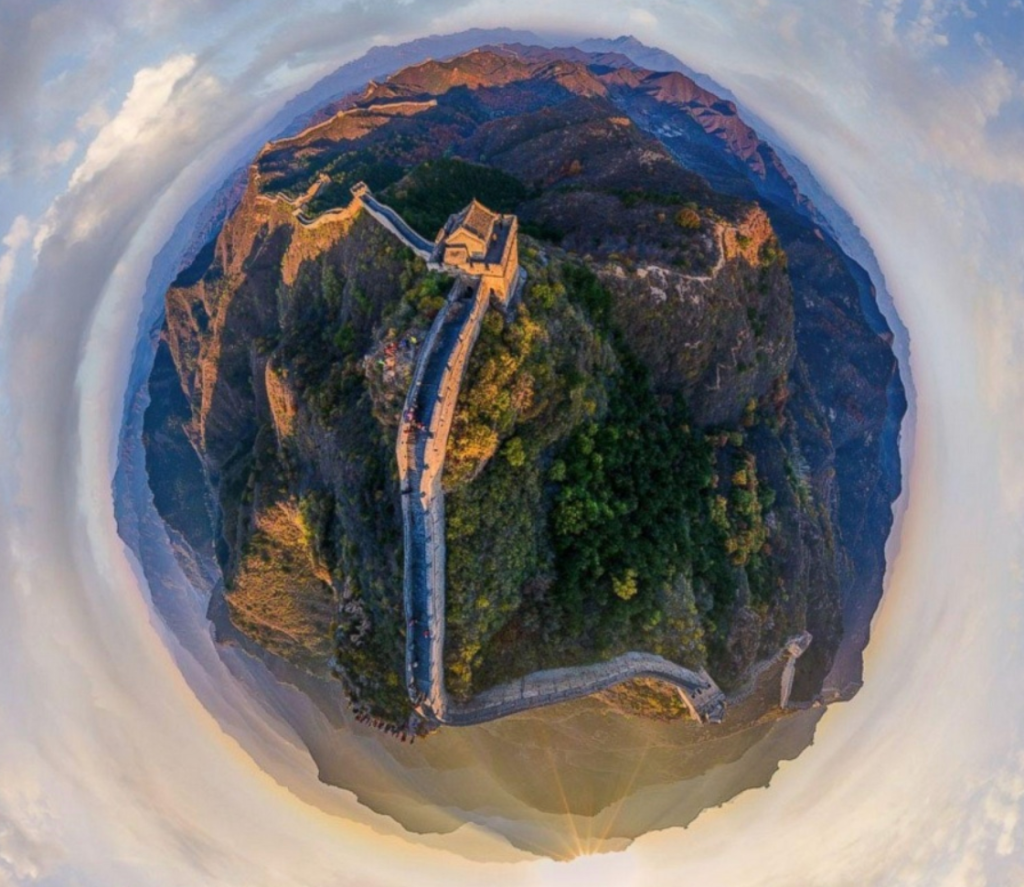For decades, a popular myth has claimed that the Great Wall of China is the only man-made structure visible from space with the naked eye. But is this true? The answer—backed by science, astronaut testimonies, and high-resolution satellite imagery—is more nuanced than a simple “yes” or “no.” To understand why, we need to explore what “seeing from space” really means, and how the Great Wall’s design and Earth’s atmosphere affect visibility.

First: What Counts as “Space”?
The confusion often starts with defining “space.” The Kármán Line, an internationally recognized boundary 100 kilometers above Earth’s surface, marks where space begins. Below that—including low Earth orbit (LEO), where most satellites and the International Space Station (ISS) operate—visibility conditions are very different from the Moon or deep space.
Most claims about seeing the Great Wall come from LEO (about 400 kilometers above Earth), where astronauts on the ISS live and work. From the Moon (384,400 kilometers away), even the largest man-made structures vanish into Earth’s surface—no human eye, or even powerful telescopes, can spot the Great Wall from that distance. As Apollo 12 astronaut Alan Bean once said: “From the Moon, Earth looks like a beautiful blue marble with white clouds, but you can’t see any man-made structures at all.”
Astronaut Testimonies: The Naked Eye Debate
For years, astronauts disagreed about whether the Great Wall was visible with the naked eye from LEO. In 1961, Yuri Gagarin—the first human in space—claimed he saw “many details” of Earth, but not the Great Wall. Later, in 1984, U.S. astronaut Bruce McCandless II said he spotted it, but only “under ideal conditions.”
Modern astronauts, however, have set the record straight. In 2003, Yang Liwei, China’s first astronaut, said he saw no sign of the Great Wall during his LEO flight. In 2011, ISS commander Chris Hadfield confirmed this: “From the ISS, you can see large cities, airports, and major highways, but the Great Wall is too narrow and blends too well with the surrounding landscape to see with the naked eye.”
Why? The Great Wall’s average width is just 5–8 meters—far too thin to stand out against Earth’s surface from 400 kilometers up. To put it in perspective: if you hold a strand of hair (about 0.1 millimeters wide) at arm’s length, it’s roughly the same apparent size as the Great Wall from the ISS. Even under perfect light (sunrise or sunset, when shadows highlight terrain), the naked eye can’t distinguish such a narrow structure from rocks, roads, or farmland.
What About With Tools? Satellites and Cameras
While the Great Wall isn’t visible to the naked eye from space, it can be seen with the help of high-resolution cameras or satellites. For example:
- NASA’s Landsat satellites, which capture images of Earth with 15-meter resolution, can clearly show sections of the Great Wall—especially well-preserved Ming Dynasty sections made of stone and brick, which contrast with the brown and green of surrounding mountains.
- The ISS’s high-definition cameras, like the Nikon D5 used by astronauts, can also capture the Great Wall if the angle, light, and weather are right. In 2015, astronaut Scott Kelly shared a photo of the Great Wall from the ISS, noting it “took patience and the right conditions to spot.”
These images, however, are not the same as “seeing with the naked eye.” They require magnification and post-processing to enhance details that the human eye can’t detect on its own.
Why the Myth Persisted
The myth of the Great Wall’s visibility from space likely began in the early 20th century. In 1932, a book called The Outline of History claimed the Great Wall was “the only man-made thing visible from the Moon”—a statement with no scientific basis, but one that caught the public imagination. Over time, it was repeated in textbooks, movies, and media, becoming a beloved “fact” about China’s iconic structure.
Today, the myth is often debunked in science classes, but it still lingers. Part of the reason is pride: the Great Wall is a symbol of China’s ancient ingenuity, and the idea that it’s “visible from space” feels like a testament to its grandeur. But as scientists and astronauts remind us, its true greatness lies not in being seen from space, but in its 21,196-kilometer length, its role in protecting ancient China, and its status as a UNESCO World Heritage Site.
Conclusion
In short: You cannot see the Great Wall of China from the Moon or with the naked eye from low Earth orbit. With high-resolution cameras or satellites, however, sections of it can be spotted under ideal conditions. This doesn’t diminish the Great Wall’s importance—it simply reflects the limits of human vision and the scale of our planet.
The next time someone asks if the Great Wall is visible from space, you can share the science: it’s not about being “big enough” to see from afar, but about being a masterpiece of ancient engineering that connects centuries of history—one meter at a time.